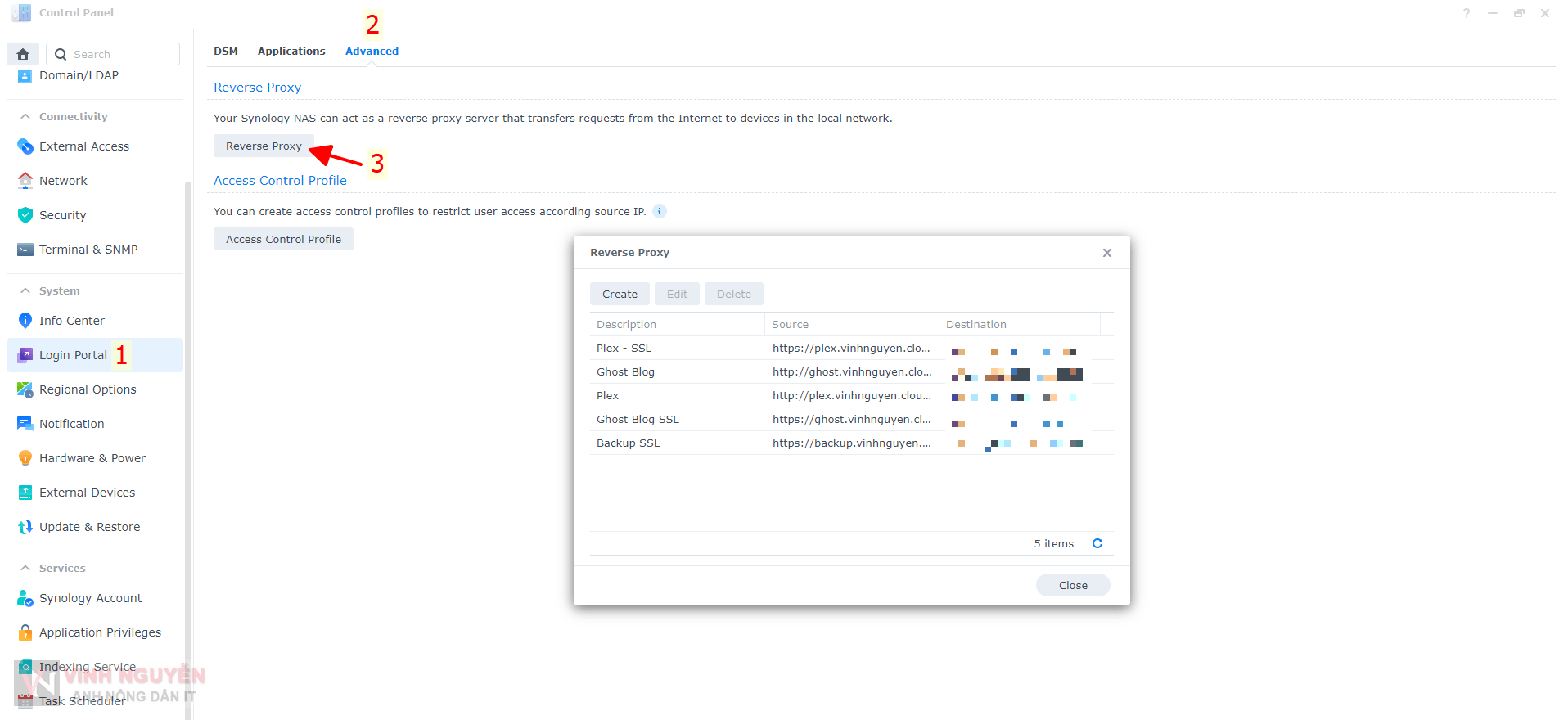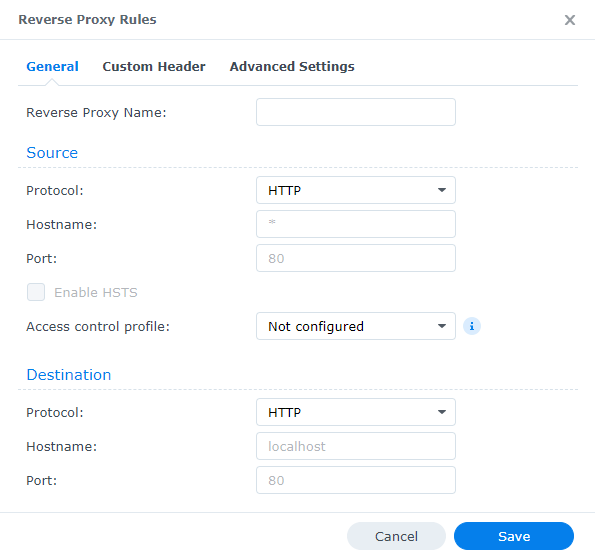

It will also help you to avoid exposing your real IP address, custom port or simply to have a. Please check your network settings and try again." I've tried appending :443 and :5001 to the domain as tests they give the same error. This tutorial will cover a few short steps that you need to know and setup in order to make your apps and services accessible via the internet (or LAN) using a specific domain name and custom (or default) port. Only way I could get Drive to work through reverse proxy was by also opening and appropriately forwarding 6690.
#Synology vpn plus reverse proxy android#
The Android app and iOS can use whatever port you setup because there is no 'sync' feature like on desktop. However the Cloud Station Backup client is giving error: "Connection failed. This is a good answer, most Cloud Station/Drive programs from Synology have 6690 hard-coded in for sync traffic. All this works fine for the NAS web interface. So far I have the DNS configured to forward to my IP, the proxy is forcing HTTPS and redirecting that subdomain to the NAS. Now however I'm needing to ensure I keep my files backed up while away so I'm wanting to connect via my domain using that wildcard cert on the reverse proxy. Then use that port on the Reverse proxy tab to make a custom entry. I would very much like to put the router behind my reverse proxy so i can acess it with a simple subdomain on a standard port, and allow caddy server to handle the SSL certs. Here you define the Drive app on a custom HTTP/HTTPS port. Hello, I have a synology router that is setup in bridge mode that I use exclusively for its VPN Plus server for the SSL and Web VPN. Control Panel > Application portal > Drive app. I've also had a Synology NAS on the same network where I've been backing up via Cloud Station Backup using the NAS local IP address. Shadow said: But Synology's GUI doesn't support it. Create config file sudo vi .I've had an Nginx reverse proxy setup already for hosting various home projects and keep a wildcard SSL cert on that box.

The main configuration file is directed to load all settings from this directory. Synology autogenerates the nginx configuration whenever you change parameters via the UI, so this is a safe place to have changes persist. cd /usr/local/etc/nginx/sites/sites-enabled At the moment you 'kinda' can do this by using the Web VPN with custom subdomains, but it adds yet another layer of authentication and does not work well with some systems (home-assistant, for instance). Log into the NAS and navigate to the proxy settings directory. +1 for reverse proxy implementation directly on the router. Find a safe place to persist configuration The errors will show up in the UI and the browser console. The WSS protocol is equivalent with HTTPS, but for websockets. Moreover, with multiple management tools, this package can help the network. It supports various VPN services WebVPN, SSL VPN, Remote Desktop, SSTP, OpenVPN, L2TP/IPSec, PPTP, and Site-to-Site VPN.

This package allows secure VPN access through a web browser or client. The WS and WSS protocols are however not handled out of the box by Synology. VPN Plus Server turns your Synology Router into a powerful VPN server. I’ve setup my internal DNS to point to the NAS ip, which then looks at the requested hostname and performs a simple proxy. The common way of using the Synology NAS as a reverse proxy. Setup Reverse Proxy via Control Panel/Application Portal Web-based portal VPN gives users direct access to company intranet sites and there is even an option to. It supports SSTP, OpenVPN, L2TP over IPSec, as well as Synologys own SSL VPN protocol and lightweight desktop client. This has multiple great use cases such a. Instead we need to configure the nginx proxy directly. VPN Plus allows your Synology Router to host a powerful VPN server that is easy to set up and manage. A reverse proxy allows you to host multiple apps on the same port and IP address by accessing them via the hostname.
#Synology vpn plus reverse proxy install#
I install that certificate on my NAS and then reverse proxy all HTTPS request via the built in nginx proxy to the individual services.įor the Unifi controller however, more tinkering is neccessary and the reverse proxy cannot be setup using the UI. An SNI certificate has up to 100 alternate names rolled into one certificate, which is almost like a wildcard certificate. Since Chrome has begun to warn against sites not using HTTPS, including self-signed which are prominent in DIY solutions, I’ve turned to use my NAS box to perform reverse proxy functions and to host my SNI based SSL certificate from LetsEncrypt.


 0 kommentar(er)
0 kommentar(er)
